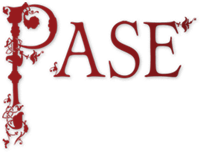Table of Contents
Top of page
Name
Summary
Distribution Map
Property List
Profile
Bibliography
Bottom of page
Modwin 2
Modwin ‘of Erehwon’ (Essex), fl. 1066x1086
Male
DWP
4 of 5
Summary
Modwin held one estate in Essex in 1066, and prospered to become a tenant-in-chief with eight estates in Essex in 1086.Distribution map of property and lordships associated with this name in DB
List of property and lordships associated with this name in DB
Holder 1066
| Shire | Phil. ref. | Vill | DB Spelling | Holder 1066 | Lord 1066 | Tenant-in-Chief 1086 | 1086 Subtenant | Fiscal Value | 1066 Value | 1086 Value | Conf. | Show on Map |
|---|---|---|---|---|---|---|---|---|---|---|---|---|
| Essex | 70,2 | Donyland | Moduinus | Modwin 'of Donyland' | - | Hagebern | - | 0.60 | 0.70 | 0.50 | C | Map |
| Totals | ||||||||||||
Tenant-in-Chief 1086 demesne estates (no subtenants)
| Shire | Phil. ref. | Vill | DB Spelling | Holder 1066 | Lord 1066 | Tenant-in-Chief 1086 | 1086 Subtenant | Fiscal Value | 1066 Value | 1086 Value | Conf. | Show on Map |
|---|---|---|---|---|---|---|---|---|---|---|---|---|
| Essex | 68,1 | Wickford | Moduinus | Edwin Grut | - | Modwin | - | 0.50 | 0.50 | 0.50 | C | Map |
| Essex | 68,2 | Witham | Moduinus | Harold, earl | - | Modwin | - | 1.00 | 1.00 | 1.00 | C | Map |
| Essex | 68,3 | Creeksea | Moduinus | Alweard 'of Creeksea' | - | Modwin | - | 1.00 | 1.50 | 1.50 | C | Map |
| Essex | 68,4 | Layer | Moduinus | 1 free man | - | Modwin | - | 2.00 | 3.00 | 3.00 | C | Map |
| Essex | 68,5 | Crepping | Moduinus | Alweard 'of Crepping' | - | Modwin | - | 0.25 | 0.50 | 0.50 | C | Map |
| Essex | 68,6 | Donyland | Moduinus | Lagman 'of East Donyland' | - | Modwin | - | 0.25 | 0.50 | 0.30 | C | Map |
| Essex | 68,7 | Tendring | Moduinus | Ælfric 'of Tendring' | - | Modwin | - | 0.13 | 1.00 | 1.00 | C | Map |
| Essex | 68,8 | Derleigh | Moduinus | Godwine the priest 'of Derleigh' | - | Modwin | - | 1.04 | 0.50 | 0.13 | C | Map |
| Totals | ||||||||||||
Profile
Modwin 2’s tiny holding was one of six small estates at Donyland TRE, now East Donyland and lying in the flat estuarine land between the Birch Brook and the Roman River at their confluences with the River Colne. His estate appears to have been purely arable and not to have included any of the available marshland grazing, because DB records only a plough and two bordars (who with their households would have provided the estate’s workforce) but no livestock on the land TRE.Modwin not only survived but prospered after the Conquest. Although he no longer held his TRE holding at Donyland in 1086, holding instead a smaller one there of just 1 virgate that had been held by Lagman 3 TRE, he had also acquired a further seven small estates. His eight estates were all in east Essex, had a combined assessment of over 6 hides and a value of nearly £8, and he held them as a minor tenant-in-chief rather than as another lord’s subtenant. His rise from small-scale farmer to local lord is impressive.
A notable feature of Modwin’s estates in 1086 is that they were dispersed through six of the eight or nine easternmost hundreds of Essex. His lands had been held by at least six different landholders TRE, so no pattern of succession is discernable there, nor are all of his estates in obviously close proximity to those of any particular post-Conquest lord (although some undoubtedly are). Perhaps the most obvious pattern is one of omission, in that Modwin’s estates occur only in the east of the county whereas those of its sheriff in 1086, Peter de Valognes (Peter 11), occur only in the west and north; but one should not speculate further ex silentio. Nevertheless, it seems more likely that Modwin had gained his post-Conquest wealth and status through some official appointment or function than that he had acquired them through any profits generated by his small TRE farm.
Of Modwin 2’s post-Conquest estates the largest was of 2 hides at Layer, about 3 miles to the west of Donyland, while the smallest was of just 15 acres ‘held as a manor’ at Tendring; none lay more than 14 miles from one of the others. More mixed farming was practiced on these than on his original estate. The presence of 6½ ploughs and 235 sheep represent the main concerns, but he also had goats, cattle and pigs as well as five horses. The combined workforce for these estates was not large, comprising only nine bordars with their households and three slaves.
No other person called Modwin is recorded in DB, either TRE or TRW. It has been suggested that Modwin’s name, rather than being of Continental Germanic origin, could actually be an otherwise unrecorded Old English name *Mōdwine on the grounds that it was the name of a TRE landholder (Rumble 1983: DB Ch.68 Notes). An alternative suggestion, based on his wealth and status in 1086 relative to that TRE, is that his continental origins, together with presumably the ability at least to get by in Old English if not actually bilingual, made him a useful local official and that he performed some such rôle in the eastern part of post-Conquest Essex.
Bibliography
Rumble 1983: Domesday Book 32: Essex, ed. A, Rumble (Chichester, 1983)
